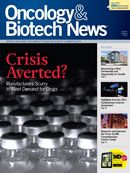Publication
Article
Oncology & Biotech News
Barriers to Mammogram Completion Persist Despite Insurance Coverage and Reminder Programs
Author(s):
New research suggested that concern about pain may deter obese women from undergoing mammography, while a busy schedule may dissuade women aged less than 60 years

New research suggested that concern about pain may deter obese women from undergoing mammography, while a busy schedule may dissuade women aged <60 years. Furthermore, the results show that both groups of women tend to avoid mammograms, even though they have healthcare insurance through a health maintenance organization (HMO) and are sent reminders informing them that they are due for a mammogram.
Adrianne C. Feldstein, MD, with Kaiser Permanente Center for Health Research in Portland, Oregon, and associates examined patient characteristics potentially associated with mammogram noncompletion in women who had received a reminder intervention. The study was also undertaken to identify patient-reported barriers that might explain variations in mammography completion rates.
The authors said that breast cancer is the most common cancer among women in the United States and is responsible for 15% of all cancer-related deaths in women. Early detection using mammography can decrease breast cancer deaths by more than 30%, and a US government task force recommends screenings annually or every 2 years beginning at age 50.
The investigators reviewed the medical records of 4708 women aged 50 to 69 years who were HMO members and for whom 20 months had elapsed since their last mammogram (ie, the index date). All of the women had been reminded through postcards and telephone calls that they were due for a mammogram. A subgroup of 677 women was asked to complete a mailed survey intended to elicit their perspectives about and experiences related to breast cancer screening. Overall, 340 women completed the survey. The primary outcome was completion of screening mammography by 10 months after the index date.
The analysis demonstrated that characteristics associated with lower mammogram completion rates were age <60 years (odds ratio [OR] = 0.69; P <.0001), health plan membership <5 years (OR = 0.81; P = .019), annual family income <$40,000 (OR = 0.77; P = .018), and obesity (OR = 0.67; P <.0001). Overall, 24.7% of women said that “too much pain” was a reason why they had not completed a mammogram. Obese women were nearly twice as likely as nonobese women to cite pain as a deterrent (31.3% vs 18.8%; P <.01).
A Closer Look at Barriers

VIDEO:
Dr. David Pearlstone Discusses Mammogram Deterrents
Co-Division Chief, Breast Oncology from John Theurer Cancer Center
Also, younger women were significantly more likely to say that they were ‘‘too busy’’ (19.1% vs 6.4%; P <.001) and to have more worries about mammogram accuracy and unnecessary surgery (2.5 vs 2.3 on a 5-point worries scale; P <.05). Feldstein and colleagues said they are at a loss to explain why obese women report more pain with mammograms, although prior research has suggested that obese patients may have a lower pain threshold.
Overall, the study underscores that access to mammograms through health insurance and patient reminders does not completely eradicate patient barriers. For obese women, patient-controlled compression may be helpful. However, given that nearly half the study population was obese, they added that it is extremely important that methods of improving mammography completion rates be developed to capture obese women. For younger women, potential options to boost mammography completion rates include worksite screening programs and extended hours for mammography appointments.
The authors emphasized that the study was carried out at a single HMO, meaning that it may not be possible to extrapolate the findings to other populations.
Feldstein AC, Perrin N, Rosales AG, et al. Patient barriers to mammography identified during a reminder program. J Womens Health (Larchmt). January 28, 2011 [Epub ahead of print].










